"MADE IN CHINA" VS. USA MANUFACTURING - INTERNAL EPISODE | E021 PODCAST
LISTEN TO THIS EPISODE ON ALL STREAMING SERVICES
INTERNAL EPISODE FROM NEWPORT BEACH, CALIFORNIA
George Stroumboulis sits down for an internal episode in Newport Beach, California with Chris Hartswick to talk about their business on the topic of manufacturing their products in China versus in the United States.
George Stroumboulis and Chris Hartswick, Co-Founders of Ideoli Group, sit down in Newport Beach, California to talk about the touchy subject of "Made in China" versus "Made in America". Why they decided to make China their manufacturing hub for their global lighting business and how they have benefited (and suffered) from manufacturing most of their products in that region.
They also discuss what they are doing proactively to shift elements of the manufacturing process back to the United States with new technologies and Additive Manufacturing processes. Overall, the experience both George and Chris have in this arena and the conversation they shared is worth a listen to.
WEBSITE: https://www.ideoli.com
“And I remember this gentleman across the table is like, well, you just make this in China. And he said it in such an aggressive way. And I’m like, we sure do. Yep. We manufacture in China.”
MEDIA RELATED TO THE EPISODE
George Stroumboulis sits down for an internal episode in Newport Beach, California with Chris Hartswick to talk about their business on the topic of manufacturing their products in China versus in the United States.
George Stroumboulis sits down for an internal episode in Newport Beach, California with Chris Hartswick in the Ideoli Group offices to talk about all things manufacturing.
George Stroumboulis sits down for an internal episode in Newport Beach, California with Chris Hartswick to talk about their business on the topic of manufacturing their products in China versus in the United States.
George Stroumboulis sits down for an internal episode in Newport Beach, California with Chris Hartswick to talk about their business on the topic of manufacturing their products in China versus in the United States.
ABOUT THE “INVIGORATE YOUR BUSINESS” PODCAST
The Invigorate Your Business with George Stroumboulis podcast features casual conversations and personal interviews with business leaders in their respective fields of expertise. Crossing several industry types and personal backgrounds, George sits down with inspiring people to discuss their business, how they got into that business, their path to the top of their game and the trials and tribulations experienced along the way. We want you to get inspired, motivated, and then apply any advice to your personal and professional lives. If there is at least one piece of advice that resonates with you after listening, then this podcast is a success. New episodes weekly. Stream our show on Spotify, YouTube, Apple, Amazon and all other platforms.
ABOUT GEORGE STROUMBOULIS
George Stroumboulis is an entrepreneur to the core, having launched several ventures across multiple industries and international markets. He has held senior-level positions at progressive companies and government institutions, both domestically and internationally, building an extensive portfolio of business know-how over the years and driving profit-generating results. George’s ability to drive real change has landed him in several media outlets, including the front page of the Wall Street Journal. George was born in Toronto, Canada to his Greek immigrant parents. Family first. Flying over 300,000 miles a year around the world puts into perspective how important family is to George’s mental and emotional development. With all this travel to global destinations, the longest he stays even in the most far-out destination is 3 days or less - a personal rule he lives by to make sure he is present and involved in family life with his wife and three daughters. To read about George’s global travels, stay connected with his blog section.
STAY CONNECTED WITH GEORGE STROUMBOULIS
STREAM & LISTEN TO THE PODCAST:
SPOTIFY: https://open.spotify.com/show/1rW2CmxQoiJNEPOZupJlvd
YOUTUBE: https://www.youtube.com/user/Stroumboulis
APPLE iTUNES: https://podcasts.apple.com/us/podcast/invigorate-your-business-with-george-stroumboulis/id1607693240
AMAZON MUSIC: https://music.amazon.com/podcasts/8fc03929-71b3-483a-a64e-153e30b3d462/invigorate-your-business-with-george-stroumboulis
iHEARTRADIO: https://www.iheart.com/podcast/269-invigorate-your-business-w-92187370/
STROUMBOULIS SITE: https://www.stroumboulis.com/podcast
PODCAST SITE: http://www.invigorateyourbusiness.com
OTHER SERVICES: GOOGLE, PANDORA, OVERCAST, CASTRO, CASTBOX, PODFRIEND, PLAYER.FM, PODCASTADDICT, PODCHASER, PODCASTINDEX and RSS FEED.
FOLLOW GEORGE STROUMBOULIS:
INSTAGRAM: https://www.instagram.com/georgestroumboulis/
YOUTUBE: https://www.youtube.com/user/Stroumboulis
LINKEDIN: https://www.linkedin.com/in/Stroumboulis/
TWITTER: https://twitter.com/Stroumboulis
FACEBOOK: https://www.facebook.com/georgestroumboulis
TIKTOK: https://www.tiktok.com/@georgestroumboulis
CONTACT GEORGE DIRECTLY: https://www.stroumboulis.com/connect
FULL SHOW TRANSCRIPT
In today's internal episode, we are in Newport Beach, California, and we sit down to talk about manufacturing and specifically the stigma of ‘Made in China.’ It's a topic around the world, especially here in the United States, about made in China versus made in America. And we dive into our business and why we continue to manufacture overseas, specifically in China, and what we're doing to transition and bring more manufacturing back home, what we're already doing from an assembly standpoint here in the United States, and what the future looks like, for our manufacturing capabilities. So interesting episode, please subscribe, tune in, and enjoy.
My name is George Stroumboulis and I'm extremely passionate about traveling the world, meeting new people, and learning about new businesses. Join me as I sit down with other entrepreneurs to learn about their journeys. This episode of Invigorate Your Business starts now.
George Stroumboulis: We're talking about a fun subject today, Chris. Fun topic.
Chris Hartswick: Let's do it.
George Stroumboulis: We're in Newport Beach, California.
Chris Hartswick: Beautiful.
George Stroumboulis: Ideoli’s West Coast Operations. Cool space here. We're in the showroom Bullpen where a lot of the magic happens.
Chris Hartswick: Sure.
George Stroumboulis: Yeah. Lots of magic.
Chris Hartswick: So much magic.
George Stroumboulis: You flew in last night.
Chris Hartswick: I did.
George Stroumboulis: Alex John Wayne.
Chris Hartswick: Wayne. Mr. Wayne.
George Stroumboulis: Yes. Fun fact. John Wayne Airport. Three names. Orange County Airport.
Chris Hartswick: Santa Ana.
George Stroumboulis: Santa Ana, and John Wayne. Yeah. Good airport.
Chris Hartswick: Great airport.
George Stroumboulis: Best in the country.
Chris Hartswick: Very close.
George Stroumboulis: Yeah. It's…
Chris Hartswick: Easy to get in and out of.
George Stroumboulis: Nine minutes from here there.
Chris Hartswick: Yep.
George Stroumboulis: Yeah.
Chris Hartswick: Not easy to get an Uber.
George Stroumboulis: Not easy to get an Uber.
Chris Hartswick: That's okay.
George Stroumboulis: It's okay, Chris. We walked, this morning we go to Venice Beach. Shitty Venice Beach. I mean, great Venice Beach.
Chris Hartswick: My first time.
George Stroumboulis: What were your thoughts? I mean, the weather was gloomy, so it…
Chris Hartswick: Very gloomy. We were there early. I don't know. Parts of it were fully expected, like just kind of casual, funky, artsy beach town. And then other parts were just kind of…
George Stroumboulis: Sketch.
Chris Hartswick: Yeah. A little strange.
George Stroumboulis: Good meeting. Good coffee.
Chris Hartswick: Good meeting. Great meeting. Good coffee. New designers, new contacts. It's a…
George Stroumboulis: Doing big things out here. And then we rushed back here, had an interview, then we go to another client meeting, multifamily developer. Just cool stuff. There's great stuff happening on both coasts. Yeah, coming in and out. So today we're going to talk about, we’re a lighting manufacturer. We make process, right. We manufacture, and there's a stigma in general I feel when you say made in China, right? Like you look at anything you see it's made in China. Made in China, we’re no different. The majority of what we manufacture is made in China. A lot of the people will ask, you try to mask it, not you, but in general people say, oh, it's in Asia or it’s overseas. But the majority of what comes out in the world is made in China. Right? So what I would love for this quick episode is to talk about like, why we're in China, the good, the bad, the neutral. Why? Why are we there? What are we doing to diversify? Just like in business, you should never have everything in one basket, right? The same comes to manufacturing and geopolitically. So we're looking at that. So when we started our company nearly a decade ago, our only option was to manufacture in China. So start off and talk to us like why we decided to go there.
Chris Hartswick: Yeah. I mean, before, I guess I even say that I think a very important thing to remember is just like going to a new city, right? Whatever city you're going to go to, if you're going to visit, you're going to live there. There's great areas, there's bad areas, there's wonderful places, places you should not go anywhere near and you need to avoid. And I feel like same when it comes to industry and manufacturing and whatever, it doesn't matter where you manufacture even in the US, right? We have manufactured quite a few things in the US and we've had some suppliers here just absolutely turn around and screw us over and disappear on us. And we've had great manufacturers here as well. No matter where you're going to look to go, the most important part is figuring out how to maneuver and make sure that you're protected and make sure that you're approaching it in the correct way. So specifically to China, why were we there? Honestly, there was a specific level of comfort. We had been there from previous lives, previous jobs, we had great contacts there. But a lot of it also comes down to specifically the lighting industry is set up by China to be a key hub. Right? Like there are entire cities there that are dedicated just to lighting. There are cities dedicated…
George Stroumboulis: Globally, like to supply the global chain of like…
Chris Hartswick: Exactly. There are cities dedicated to just power supply production. There are cities dedicated to just glass molding. China, over however many last decades, put an incredible amount of investment into those industries. Now they're not the only ones, right? There's a lot of manufacturing. We've done a lot of manufacturing on drivers and things out of South Korea. We’ve done some out of Japan. A lot of our material processing and material raw materials come out of Vietnam and Thailand and things like that. So China specifically, it is a pretty good hub. I would say historically, not so much these days, but historically had great relationships with the US government. Very easy to get in and out of both physically so we could go there and visit, get products in and out of. But that slowly become more and more of a challenge over time from the tariffs that were added and the supply chain issues that happened. And I think everyone from all industries have been starting to realize from the pandemic and the supply chain issues and all of that, that we can't have these global hubs that are only supplying us. Right. However, 90 plus percent of the computer chips for all computer chips, cars, computers, lighting, everything comes out of Taiwan. Well, a typhoon hits Taiwan and what happens? Nobody can get parts. Cars are on hold, everything's on hold. So now there are places in Europe, places in the US even that are setting up new production facilities, to counteract that. So I think it's been a learning in the general scheme of manufacturing. It's been a huge learning process recently. And we're no different.
George Stroumboulis: And we're no different. So to that point, when we launched this company, right? Custom decorative lighting was the genesis, the basis. And we explored, hey, what if we manufactured here in California? What if we look south of the United States and some of the Latin countries? And we weighed out what does it cost? And what we decided in the end, it’s very difficult because we don't offer a portfolio of a few products that don't change and we stock them and so on. Every project, every product is different. And when we started evaluating on the basic cost on creating molds. Every product is a different mold. Well, doing it over in China and creating that mold versus here, and we're talking 3, 4, 5x in many cases and a single product may have multiple molds. And we started looking at that and we realized, hey, we’re not a commodity driven manufacturing company. It didn't make sense up until recently to start looking over here. So that was why we were over there. And a lot of the times, anyone can go on their computer or their phone and check Alibaba and find any type of product. So a lot of the times you see now people think that they're experts in buying and procurement and, oh, I can get this lighting fixture. Yeah. There's a lot of crap out there. There's decent product as well you can buy. But what we did is, we manufactured in China, the majority of our products, but we own, the factory that we're manufacturing in, right? So we have our hub, we control the labor, we control the processes, what comes in and out. And we have this elaborate network of subcontractors from the different suppliers and the LEDs, like you said, some of them are being imported from Japan or South Korea. So we've created this hub where we truly control the process. It just happens right now. The economies of scale, the economics of manufacturing our products and what we're able to sell it to our clients makes sense for us to continue to produce there. And it’s been this crossing of paths right now on, yet we understand we have to manufacture there to do this, but we also know there's tremendous pressure from our clients here in the United States, North America on made in America, bring manufacturing back home. And it's a very technical balancing act in trying to make sure and just really quick on that, years ago at the last startup, I was in a client meeting and it was a big retail brand. And I remember sitting in the meeting and there was someone who was sitting across the table and just certain people you sit with and you know, they just don't want to do business because they have their partners. And, I remember we're talking and we're talking about why we're so good in our products and everything. And I remember this gentleman across the table is like, well, you just make this in China. And he said it in such an aggressive way. And I'm like, we sure do. Yep. We manufacture in China. I go, where is your clothing manufactured? And he just kind of stood back and like looked at it. I go, I'm just curious. Like where do you manufacture your clothing, he’s like, China. I go, right, but you're still selling a good quality product the same way we make a good quality product. And it was just one of those things right now and it's got this stigma made in China and now politically it's escalated it. So talk to me about our next step, even though we manufacture in China, we've started in our New York facility, actually assembling and getting more creative in that aspect.
Chris Hartswick: Yeah. I mean, like you said, when we're focused on the decorative side, it's so difficult to be able to do a full manufacturing on our business model anywhere really, but especially here in the US. Because we have so many different materials that we use, we have so many different molding techniques that we use. We have so many different assembly techniques and installation and all of that requires such specialty equipment, knowledge on how to use the equipment, specialty engineering. And it's also important to note that when we went to China and being established in China, it wasn't, to your point before, we didn't just Google custom lighting China on Alibaba and go to the first three places. We went through…
George Stroumboulis: Which, by the way, a lot of people do and think that's what we're competing with. It's like great.
Chris Hartswick: Right. And even if they don't do that, most people think that's all you need to do. But, I mean, how many, I couldn't even answer the question. If we went through how many different suppliers we worked with and fired and got rid of and changed and moved because of, they weren't, whatever it was, the quality wasn't there. The negotiation wasn't there. The communication wasn't there. They were falling behind on lead times, whatever that is to get established anywhere, not just in China, is not something you can do overnight. Especially when you have a business model like we do. And every product requires a whole different level of skill. So to go back to your question, what are we doing here? Well, one, we've been starting to expand elsewhere in general, right? We've been looking in India specifically, been looking in parts of Eastern Europe, and parts of Mexico. So that involves not just having great suppliers, but also having a great team. In China, we have our engineering team.
George Stroumboulis: Internally.
Chris Hartswick: Yes.
George Stroumboulis: To Ideoli.
Chris Hartswick: We have our own employees, our engineering team, our quality control guys. We have an entire team that, when we're manufacturing something at a molder, our, at least two engineers are sitting there at the mold. They're watching production get made, they're doing IQL of the products before it even comes off the line, before it even ships to our facility to assemble. You have to have that level of oversight and that level of control to make sure that you're not going to have problems later on even down the road warranty issues. So that's what we've already started doing, growing our European office using that as our central hub to get into India and Eastern Europe. We've been hiring in Eastern Europe, getting more engineers in there, so they can speak that local language and talk with those local suppliers.
George Stroumboulis: Yeah. Two weeks we're going to be over in southeast Europe surveying a possible partnership with some local suppliers there, these component suppliers.
Chris Hartswick: So it's not something that happens overnight. You got to build those cornerstones and building blocks to make sure that it all comes together. But it's something that we actively are working on and have been so that we can manufacture more and more. And when it comes to our more standard type products, our cylinders, our [Inaudible 14:33 – 14:34]. We do so much final assembly here. Molds come from all over the place, wherever that is. Electronics come from all over the place. But the final assembly of that we are able to do here.
George Stroumboulis: And by the way, just the way we engineer our products to be able to snap into place, different color temperatures, different beams, just being able to do that here and bring everything, 3D printing is the next wave of where we're going, which I want you to jump into by the whole 3D printing, additive manufacturing, which is becoming like the big term buzzword. You’re going to be speaking later this summer at an event down here in Southern California. So talk to us about the importance, like what were we hindered by before by being able to use 3D printing and develop different components with lighting from optic constraints from thermal management and where are we going right now? Because it's totally revolutionized the direction of this.
Chris Hartswick: Yeah. Absolutely. And I think a big limitation when it comes to, even now, when it comes to 3D printing and out of manufacturing is really the education of it. It is a different way to use it to its fullest. You have to rethink how you're designing fixtures. You have to rethink how they're going to assemble and you also have to rethink materials, right. Because it's a whole new material set to be able the 3D print it. You can…
George Stroumboulis: What's an example? Because people think 3D printer, the majority of listeners are, ah, made a little dinosaur but what materials now are we using that should help dissipate heat and…
Chris Hartswick: Well. And I think a lot of that is specifically that, right? One of the big things we're doing with our cylinder line is now we're evaluating different thermoplastics because traditionally or currently we use our cast aluminum housings as our main thermal dissipation unit, right? It's the driving force of cooling the LED system is the actual housing itself. One, LEDs have continue even now to get more efficient so you don't have to put as much power through them. But two, there's incredible materials out there, plastic materials that can operate as a heat sink. Are they as good as pure aluminum? No, but they do plenty and they do enough to get the heat away from the LED where you don't have to worry about performance issues, especially over time. So getting that education on the materials and then when you have that education, okay, now when you have these different parts that were traditionally, you have a front, you have a back, it snaps together, it twist, it locks. Well, maybe you can manufacture that as one single part now. So now you're reducing your part count. And reducing your part count that can help reduce the amount of material you have to keep on the shelf. It can reduce the amount, it greatly shortens your BOM. So if you can do that, now you don't have to inventory all these different items and you don't have so many different recipes on how this thing can actually snap together. You go from 16 major parts down to 11. And then who knows in the future maybe 11 becomes six.
George Stroumboulis: Well, and talk about the footprint of an actual facility. Right now our cylinders, we probably have 18 to 20,000 units in stock between both warehouses. It's a footprint. Each pallet, 288 units, where we're moving to is stocking tens of thousands of actual LED COBs and drivers that. It’s a fraction of the footprint. And then obviously you need the machine doing everything to print as we go. But this is going to change how we're able to even manage inventory and print on demand and assemble real time.
Chris Hartswick: Well, and not even print on demand, but you recognize a, whether it's a flaw, a fault that you need the correct or especially for us, something custom, a customer wants to add a cross baffle to something or they want to adjust the color. They wanted this or they wanted that. We don't have to deal with things like tooling time. Opening new molds. Hardening the molds, getting it ready just for production, checking the first units off and then going through the manufacturing process, sending the raw material out to get painted. If all that can happen, we have the file set up, everything's good. You want which color, you want which and you just click go. Yeah. Great. Or you need to make a change and roll it out into full production. You don't have to wait for a pause where you now build up your parts. You wait because you know, the second you start modifying your mold, your mold is now down for 45 days. It's, you can immediately just say, okay, mid production run, let me change this item and start printing again.
George Stroumboulis: Put you on the spot right now. Right? Red-blooded born and raised American. Right?
Chris Hartswick: Yep.
George Stroumboulis: It's pride, wherever you're from in the world, whatever your culture is, people are proud to be wherever they're from. Okay. So we’re proud. Manufacturing overseas specifically in China versus being able to say made in America. Does that mean anything to you personally? Putting you on the spot?
Chris Hartswick: Sure. I mean, in a great beautiful world. Yeah, of course. I would love to say we make everything a hundred percent in America and we can put that stamp on it and stand behind it. That would be amazing. The reality of it is, if we were to do that, we would lose so much business because unfortunately we wouldn't be price competitive historically. Which is one of the main reasons why we didn't choose to do that.
George Stroumboulis: To that point though, we would be in line with, for example, Italian brands made in Italy, like very expensive. Like you would have to be there.
Chris Hartswick: Well, and then also lead times. Even though yes, we're dealing with shipping timelines and supply chain issues and all that, that's going on today. As far as going back to why we were in China, you could still manufacture something in China, ship it over here and it would be done before you could actually get it made here. Again, historically, things are changing and factors are changing. I think the thing that is beautiful that people often forget is, we don't manufacture that much in the US and we started out not manufacturing in the US but in order to create these products that our clients' value, we have a tremendous US team to build that up. All of our designers, all of our product engineers, all of our project management, customer service, everybody involved in that. We've had countless jobs started here to support that effort. And then not only that, we also like to think of by keeping that product cost down and saving our clients’ money, that allows them to open more locations. Open more locations means now they're hiring more people. So it's all by no means is manufacturing anywhere overseas regardless of China or not. Is that shitting on America? I really don't see it that way. We're all doing it to make it better here as an entire economy.
George Stroumboulis: Yeah. And that's a great point. We've dissected competitive products, talking about lighting even out of the space and even truly made in America is very rarely that it's 100% made in America when it comes to lighting. It could be assembled, the metal could be brought here fabricated. But like the chips, large majority are coming from outside of the country. The drivers.
Chris Hartswick: They all are.
George Stroumboulis: They all are.
Chris Hartswick: I mean, even if you simply regardless of lighting or not, look at the requirements to be able to put made in America on your product, it's not a hundred percent made in America. Different industries have different requirements, but the reason that is, you can't actually truly a hundred percent make in America. Because even if you're going to mold something here, where'd the aluminum come from? Chances are it could have come from Canada or Russia, or… You can't actually truly make everything a hundred percent in America.
George Stroumboulis: Yeah. And look politically where it's going, and this is not a political discussion. But politically it's made it that much more difficult. So a lot of other countries, India’s inviting people to come and they want to be the next op-ed and all this stuff. Vietnam, a lot of companies shifted over to Vietnam during all of this. And they have, I believe it's the TPP, the Trans-Pacific Partnership. So there's a lot of stuff happening over there. Not saying we're turning our back on what we're doing right now because we're manufacturing great product. Clients are getting amazing solutions and the pricing is extremely competitive. Right? So we're able to offer that, but where we were nearly a decade ago to where we're at now transitioning into a more hybrid approach of 100% overseas to assembly here and then moving in the direction to more true manufacturing here in North America. It's exciting. But I wanted to make sure we discussed today because a lot of people sit there and essentially like poo, poo or shit on, oh, it’s just made in China and this and that. It’s part of the cycle and we're looking at it to bring the best value to our partners.
Chris Hartswick: Absolutely.
George Stroumboulis: So that's a good quick chat. Just really quickly, so what's the show, you're speaking at in August, in San Diego? Why should people care?
Chris Hartswick: Well, it’s the SPIE conference. Engineering conference. So it's very technical. Most of the presentations there, SPIE traditionally has been focused heavily on optics. So it's an optical organization. They do a lot of optical discussions and things like that, related to everything. Not just lighting, anything optical. But a huge proponent of that has turned into additive manufacturing and how that relates to all industries. And I was asked to give a talk there. We've done some presentations as you know, even some school lectures and things like that about our process and how we've used additive manufacturing. Years and years ago, we started using it from a prototyping aspect in order to churn out faster and faster prototypes and…
George Stroumboulis: Landed major accounts being able to do that.
Chris Hartswick: Absolutely. And now using it to get more into actual full scale production and trying to push that into more and more production, which will also help us bring back more jobs and more manufacturing here in the US. So essentially those case studies and how we see the real life usage of additive manufacturing specifically in the lighting industry. And that's ultimately just a short little speech they've asked me to give, but…
George Stroumboulis: Yeah. Which is awesome. Great exposure for you personally for our company, what we're doing and in that direction of us being able to manufacture more, on the side of the pond, which is very cool.
Chris Hartswick: Yeah, it should be cool. I guess for me personally, it's my first big conference to actually speak out. I'll be…
George Stroumboulis: And the engineers, these guys like to go crazy. Let lose the engineering conference. Sounds boring, but I'm sure…
Chris Hartswick: It gets wild.
George Stroumboulis: It gets wild these days.
Chris Hartswick: It gets wild at the engineering conferences. But no…
George Stroumboulis: So I’m basically showing up for that one.
Chris Hartswick: It'll be fun. It'll be fun.
George Stroumboulis: That's awesome, man. Okay. You got a flight to catch back to New York?
Chris Hartswick: I do. Yeah.
George Stroumboulis: Chris came in last night, leaving today, there and back 22 hours probably.
Chris Hartswick: Yeah. By the time I land it'll probably be a more like 30. Yeah.
George Stroumboulis: 30. By coastal baby.
Chris Hartswick: Hey.
George Stroumboulis: Let's go.
Thanks for listening to this episode of Invigorate Your Business with George Stroumboulis. Please hit the ‘Subscribe’ and ‘Like’ buttons, and follow me on all the main podcast streaming channels. Also, please share your comments when you can. I appreciate your help in expanding this network to a worldwide audience. Until next time, stay invigorated.
CONTENTS OF THIS VIDEO
0:00 INTRO TO MADE IN CHINA VS. MADE IN AMERICA
1:20 IDEOLI'S WEST COAST OPERATIONS
2:00 WHY IS VENICE BEACH SO SKETCHY?
2:45 WHY DO WE MANUFACTURE OUR PRODUCTS IN CHINA?
4:00 THE BENEFITS OF MAKING PRODUCT IN CHINA
5:00 CITIES IN CHINA DEDICATED TO LIGHTING PRODUCTS
07:25 EXPLORING NEW MARKETS TO MANUFACTURE IN
9:50 CLIENTS CALLING YOU OUT FOR BUILDING IN CHINA
12:10 GOOD MANUFACTURING PARTNERS ARE EVERYWHERE
12:52 EXPANDING TO OTHER DEVELOPING COUNTRIES
14:00 FINAL ASSEMBLY IN THE UNITED STATES
15:10 ADDITIVE MANUFACTURING
16:00 3D PRINTING FOR LARGE SCALE PRODUCTION
20:00 PRIDE IN MADE IN AMERICA SLOGAN
24:30 SPIE CONFERENCE FOR ENGINEERS
MORE ON “MADE IN CHINA” VS. “MADE IN AMERICA”
The conflict between "Made in China" and "Made in the USA" revolves around the economic, political, and social aspects of manufacturing and trade. Here are some key points that contribute to this conflict:
Economic Competition: China has emerged as a major global manufacturing powerhouse due to its lower labor costs, large-scale production capabilities, and supply chain infrastructure. This has led to intense competition with American manufacturers, as Chinese-made products are often more affordable and readily available in the global market.
Job Outsourcing: The outsourcing of manufacturing jobs from the USA to China has been a source of contention. Critics argue that the shift of production to China has resulted in job losses and reduced employment opportunities in the United States. This has fueled concerns about the impact on local economies and the well-being of American workers.
Trade Imbalances: The significant trade imbalance between the USA and China has been a subject of debate. The United States imports a substantial amount of goods from China, leading to a trade deficit. Critics argue that this trade deficit negatively affects the American economy, while proponents suggest that it benefits consumers by providing affordable products.
Quality and Safety Concerns: There have been concerns regarding product quality and safety associated with goods manufactured in China. Instances of counterfeit products, substandard manufacturing practices, and product recalls have raised doubts about the reliability and safety of certain Chinese-made products.
Intellectual Property Rights: The protection of intellectual property rights has been a contentious issue between the USA and China. Accusations of intellectual property theft, unauthorized copying, and infringement of patents and trademarks have been raised against Chinese manufacturers. Such concerns impact innovation, technology transfer, and the profitability of American companies.
National Security Considerations: The growing dependence on Chinese manufacturing for critical industries has raised national security concerns in the USA. Reliance on Chinese-made components and equipment, particularly in sectors like technology and defense, is seen as a potential vulnerability that could compromise national interests.
It's important to note that while there are conflicts and tensions between "Made in China" and "Made in the USA," there are also instances of cooperation and collaboration between businesses in both countries. Trade policies, negotiations, and regulations play a crucial role in shaping the dynamics of this conflict.











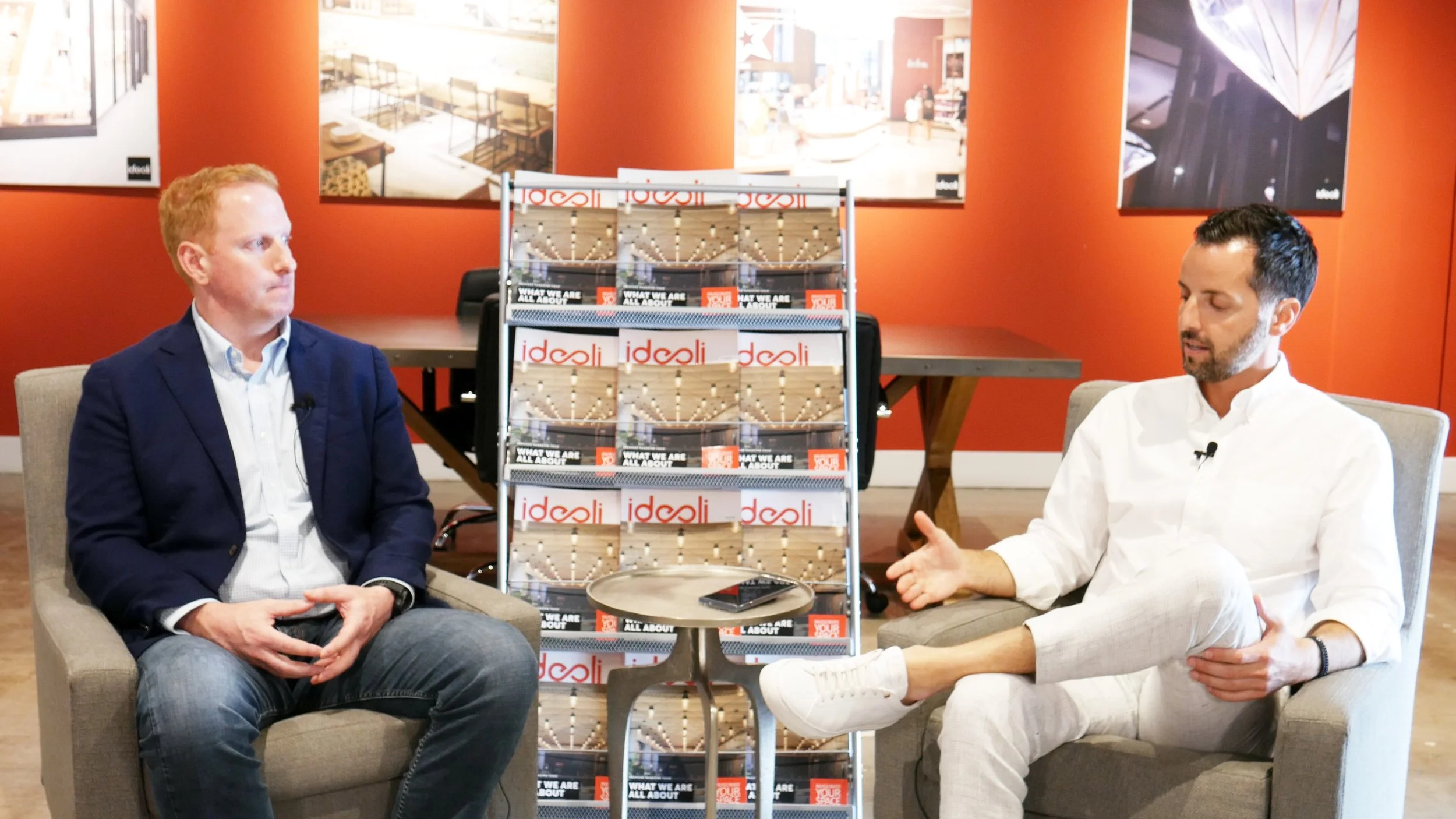
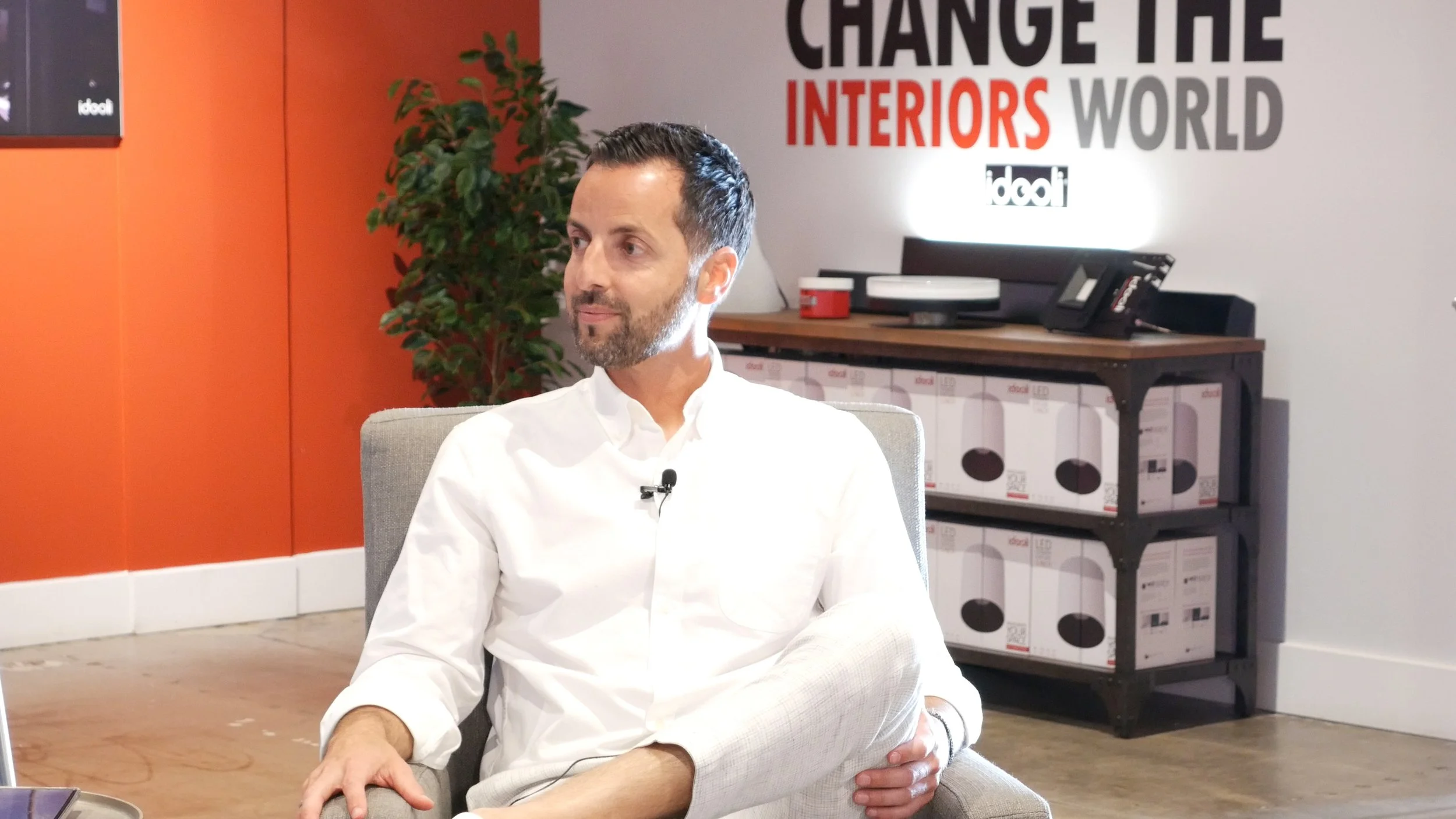
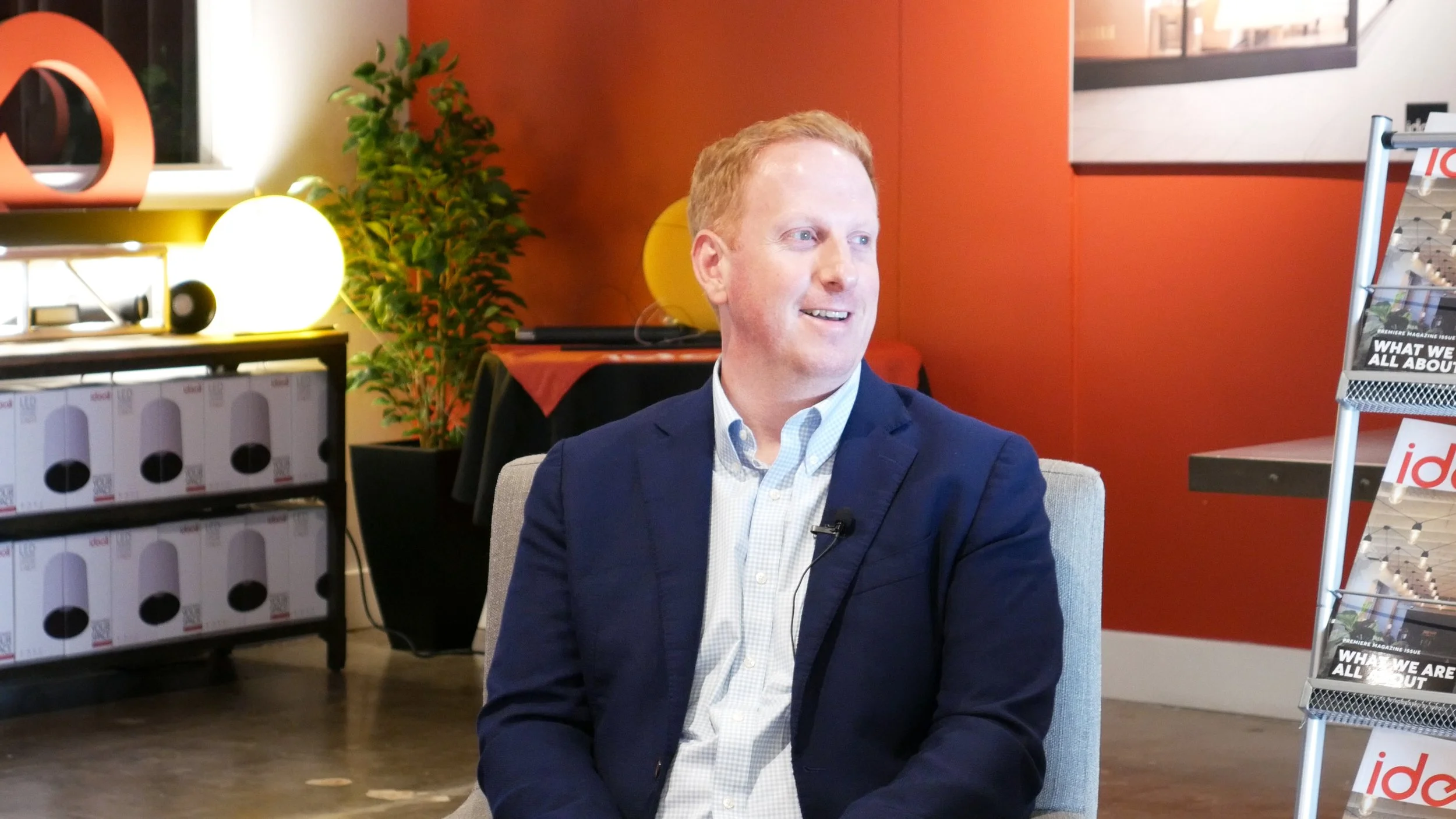
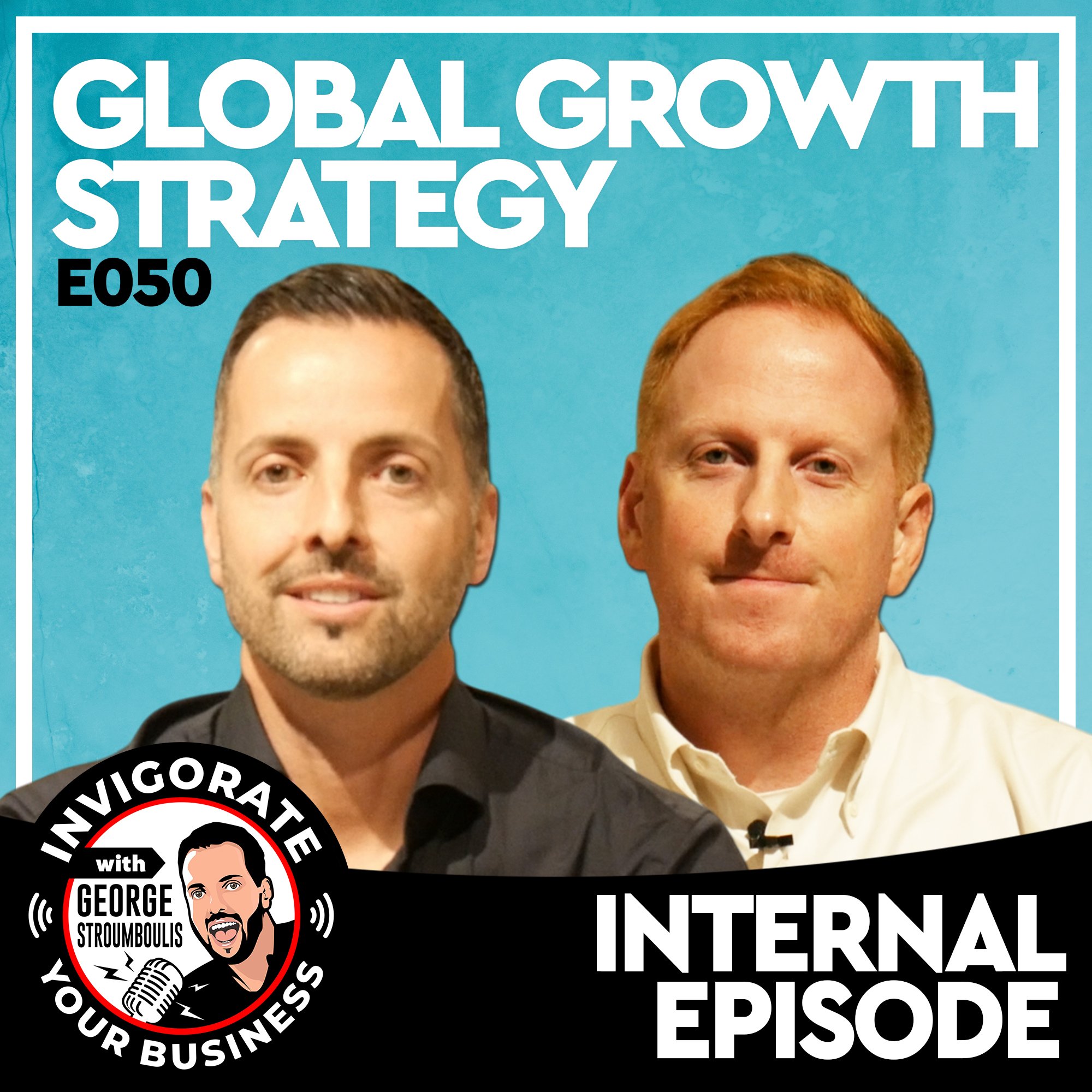



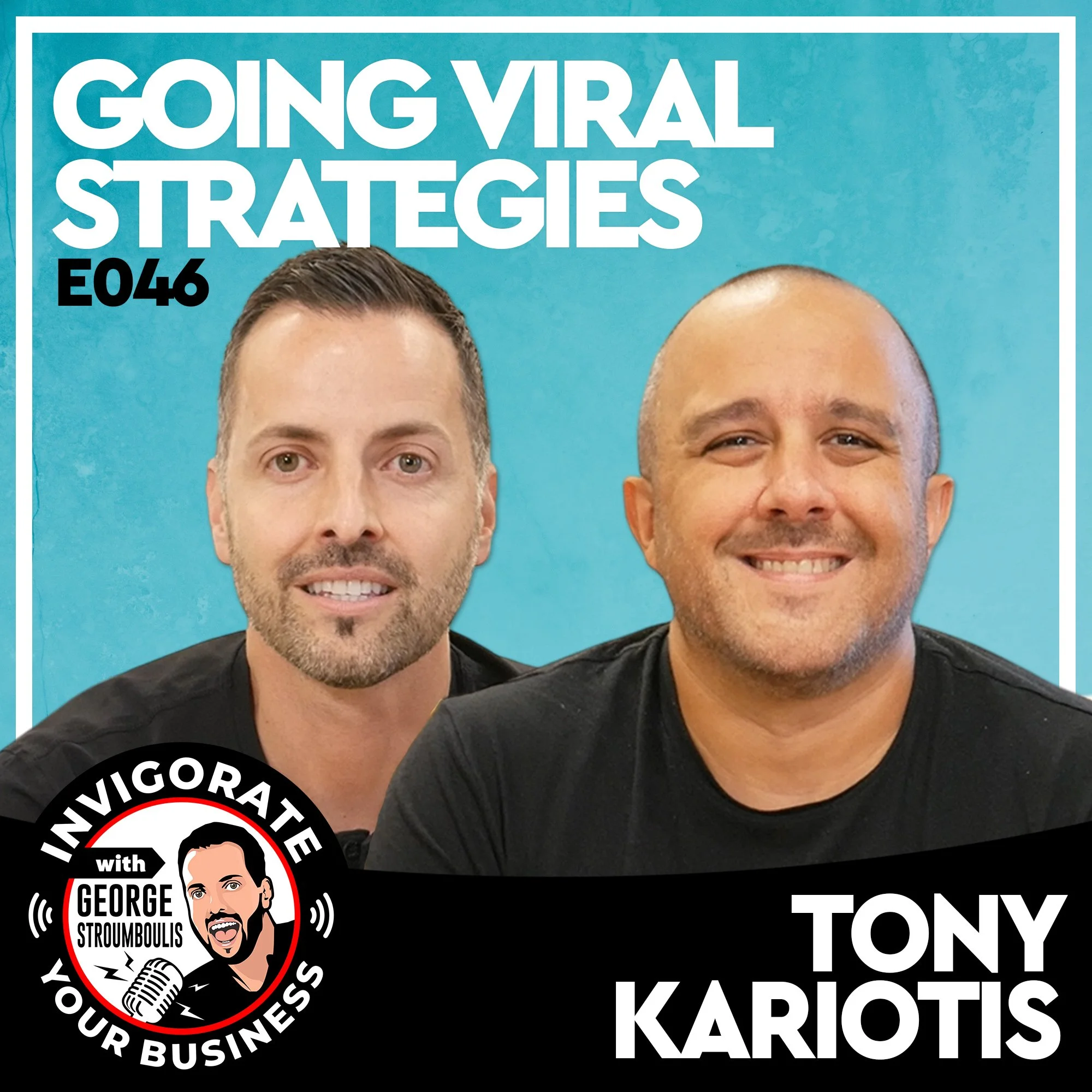

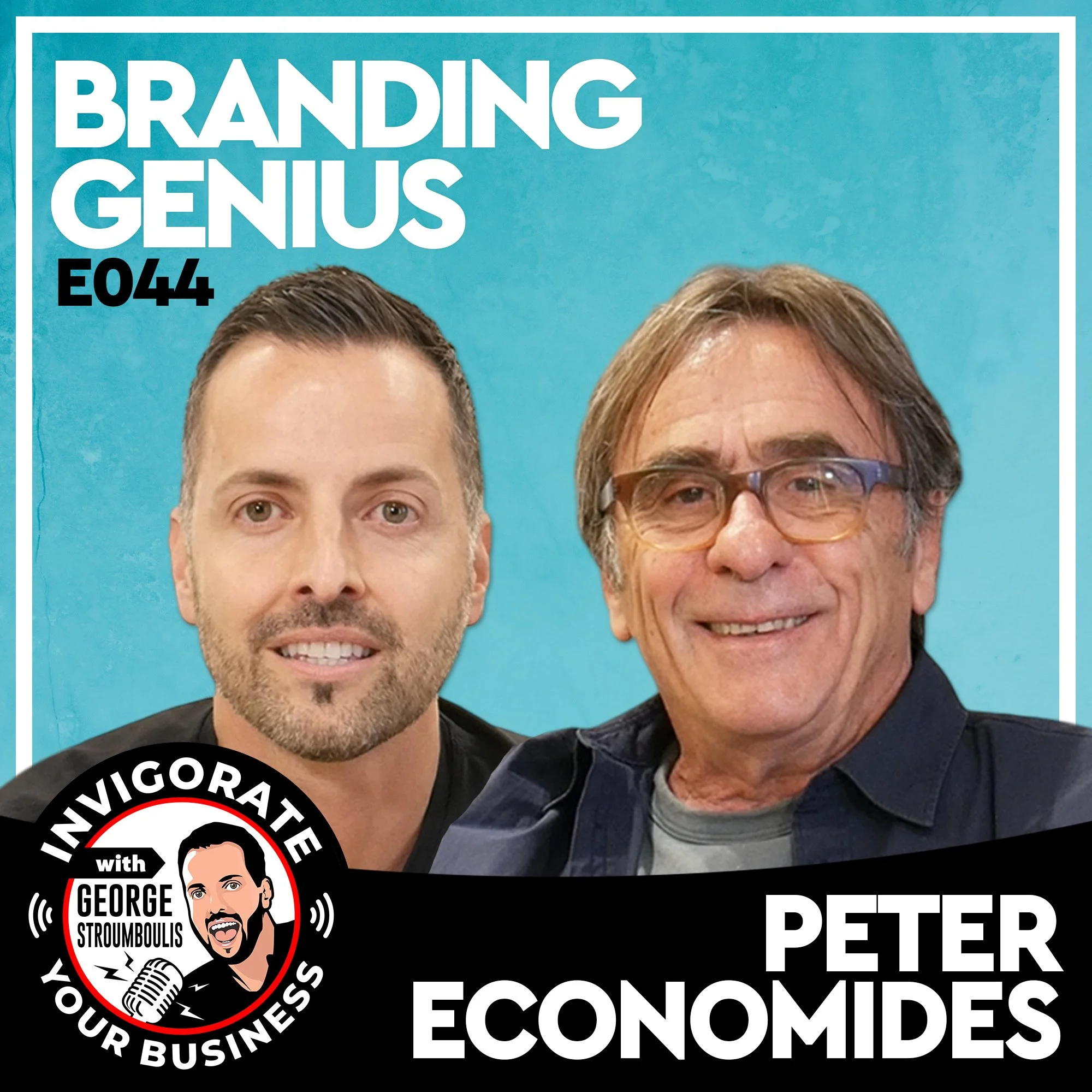
George Stroumboulis sits down with Jim Sogotis in Newport Beach, California on the Invigorate Your Business Podcast to talk about all things financial markets, investments, hedge funds, mutual funds, financial advice and so much more.